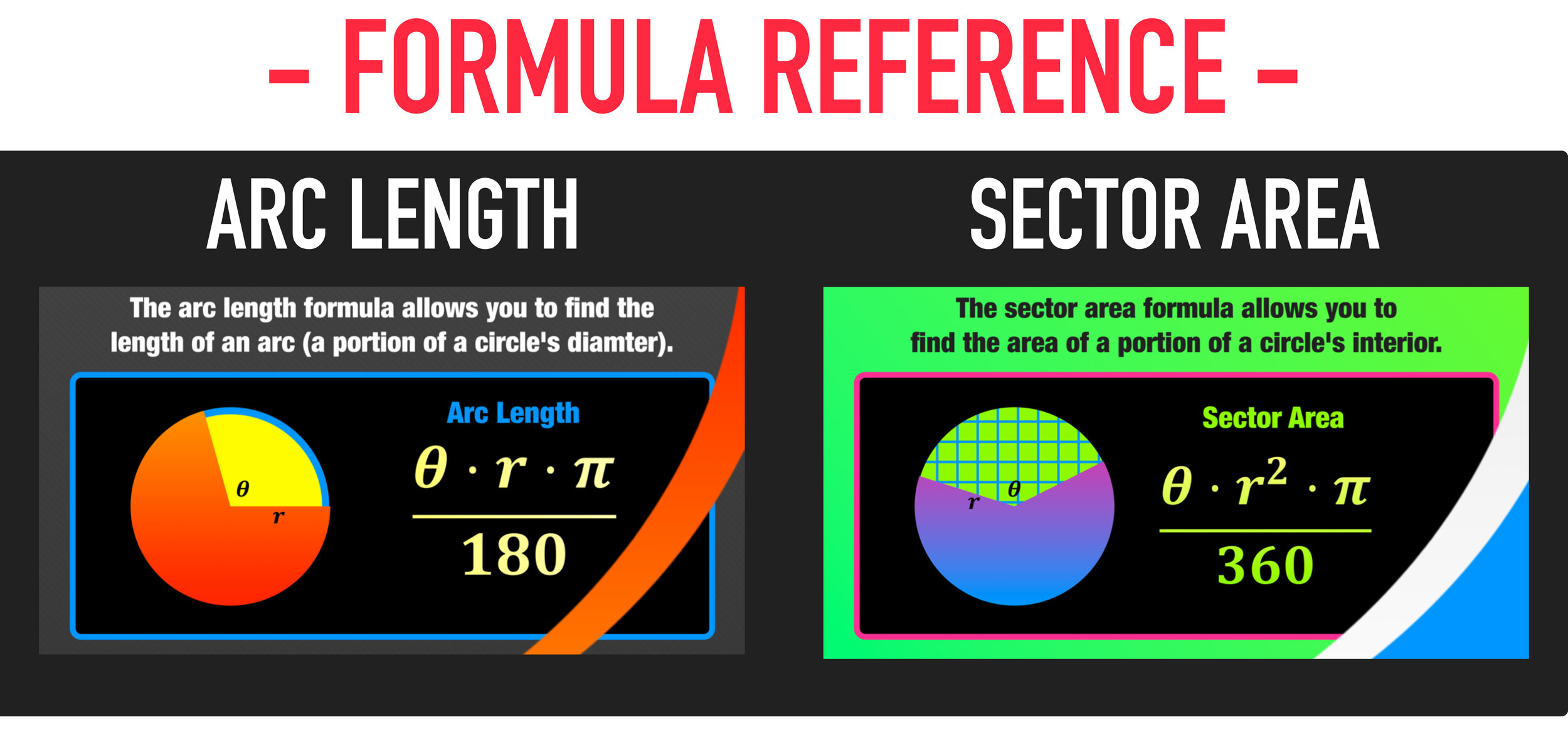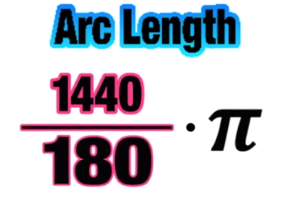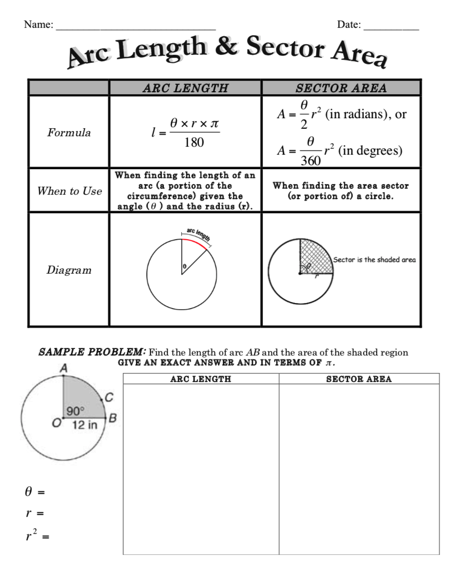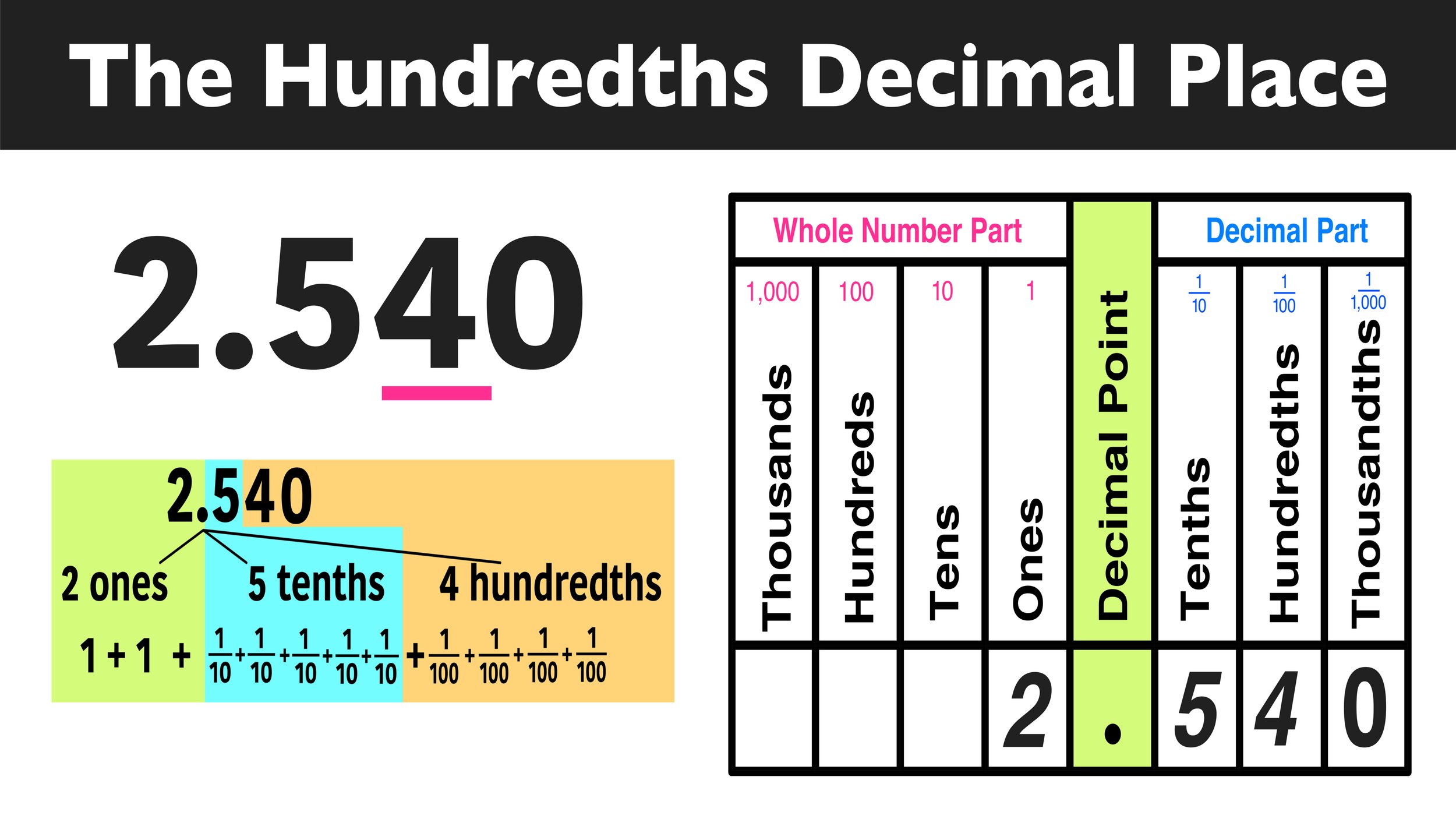How to Solve Problems Using the Arc Length Formula and Sector Area Formula
The following step-by-step guide will show you how to use formulas to find the arc length and area of a sector (Algebra, Geometry, Calculus)
Welcome to this free lesson guide that accompanies this Arc Length and Sector Area Explained! Tutorial where you will learn the answers to the following key questions and information:
What is the arc length formula? What is the arc length equation?
What is the sector area formula? What is the sector area equation?
How can I find the length of an arc of a circle?
How can I find the area of a sector of a circle?
This Complete Guide to Arc Length and Sector Area includes several examples, a step-by-step tutorial, an animated video mini-lesson, and a free equation of a circle worksheet and answer key.
*This lesson guide accompanies our animated Arc Length and Sector Area Explained! video.
Want more free math lesson guides and videos? Subscribe to our channel for free!
How to Use the Arc Length Formula and the Sector Area Formula:
Before you learn the arc length equation and the area of a sector equation, let’s quickly review two very important (and very familiar) circle properties: Circumference and Area
The circumference of a circle is the linear distance around the circle, or the length of the circle if it were opened up and turned into a straight line.
The area of a circle is the number of square units it takes to fill up the inside of the circle.
Note the circumference and area apply to the entire circle.
In the case of arc length and sector area, you will only be dealing with a portion of a circle.
The Arc Length Formula:
What if you only want to find the length of a portion of the outside of a circle and not the entire circumference?
Whenever you want to find the length of an arc of a circle (a portion of the circumference), you will use the arc length formula:
Where θ equals the measure of the central angle that intercepts the arc and r equals the length of the radius.
The Sector Area Formula:
What if you only want to find the area of a portion of a circle (a sector) and not the entire area?
Whenever you want to find area of a sector of a circle (a portion of the area), you will use the sector area formula:
Where θ equals the measure of the central angle that intercepts the arc and r equals the length of the radius.
Now that you know the formulas and what they are used for, let’s work through some example problems!
Using the Arc Length Formula Practice Problem
Example: Find the length of arc KL
Notice that this question is asking you to find the length of an arc, so you will have to use the Arc Length Formula to solve it!
Before you can use the Arc Length Formula, you will have to find the value of θ (the central angle that intercepts arc KL) and the length of the radius of circle P.
You know that θ = 120 since it is given that angle KPL equals 120 degrees. And, since you know that diameter JL equals 24cm, that the radius (half the length of the diameter) equals 12 cm.
So θ = 120 and r = 12
θ = 120 and r = 12
Now that you know the value of θ and r, you can substitute those values into the Arc Length Formula and solve as follows:
Replace θ with 120.
Replace r with 12.
Simplify the numerator.
1440/180 equals 8.
Answer: The length of Arc KL is approximately 25.1cm (and 8π if you want to leave your answer in terms of pi).
Using the Sector Area Formula Practice Problem
Example: Find the area of a sector a circle K
Notice that this question is asking you to find the area of a sector of circle K, so you will have to use the Sector Area Formula to solve it!
Before you can use the Sector Area Formula, you will have to find the value of θ (the central angle that intercepts arc AB, which is the arc of the shaded region) and the length of the radius of circle K.
You already know that the radius r is equal to 5. But what about θ ?
∠AKB and ∠AKC are supplementary
In this example, θ is the measure of angle ∠AKB, (the central angle of the green region), but the question only tells you that ∠AKC = 117 degrees.
Since ∠AKB and ∠AKC are supplementary, they have a sum of 180 degrees. You can find the measure of ∠AKB as follows:
θ = ∠AKB = 180 - 117 = 63 degrees.
So θ = 63 and r = 5
Now that you know the value of θ and r, you can substitute those values into the Sector Area Formula and solve as follows:
Replace θ with 63.
Replace r with 5.
r^2 equals 5^2 = 25 in this example.
Simplify the numerator, then divide.
Answer: The area of the green sector is approximately 4.4 square cm (and (35/8)π if you want to leave your answer in terms of pi).
Arc Length and Sector Area Formulas: Video Tutorial
Still confused? Check out the animated video lesson below:
Check out the video lesson below to learn more about the arc length and sector area formulas and to see more completing the square problems solved step-by-step:
Arc Length and Sector Area Word Problems (Advanced Practice)
Looking for more advanced practice with arc length and sector area? The following video lesson covers topics including:
arc length and sector area word problems
using the arc length and sector area equations to solve real-world problems
Extra Practice: Free Arc Length and Sector Area Worksheet
Free Worksheet!
Are you looking for some extra practice? Click the links below to download your free worksheets and answer key:
Arc Length and Sector Area Worksheet:
CLICK HERE TO DOWNLOAD YOUR FREE WORKSHEET
Keep Learning with More Free Lesson Guides:
Have thoughts? Share your thoughts in the comments section below!
(Never miss a Mashup Math blog--click here to get our weekly newsletter!)
By Anthony Persico
Anthony is the content crafter and head educator for YouTube's MashUp Math. You can often find me happily developing animated math lessons to share on my YouTube channel . Or spending way too much time at the gym or playing on my phone.



































